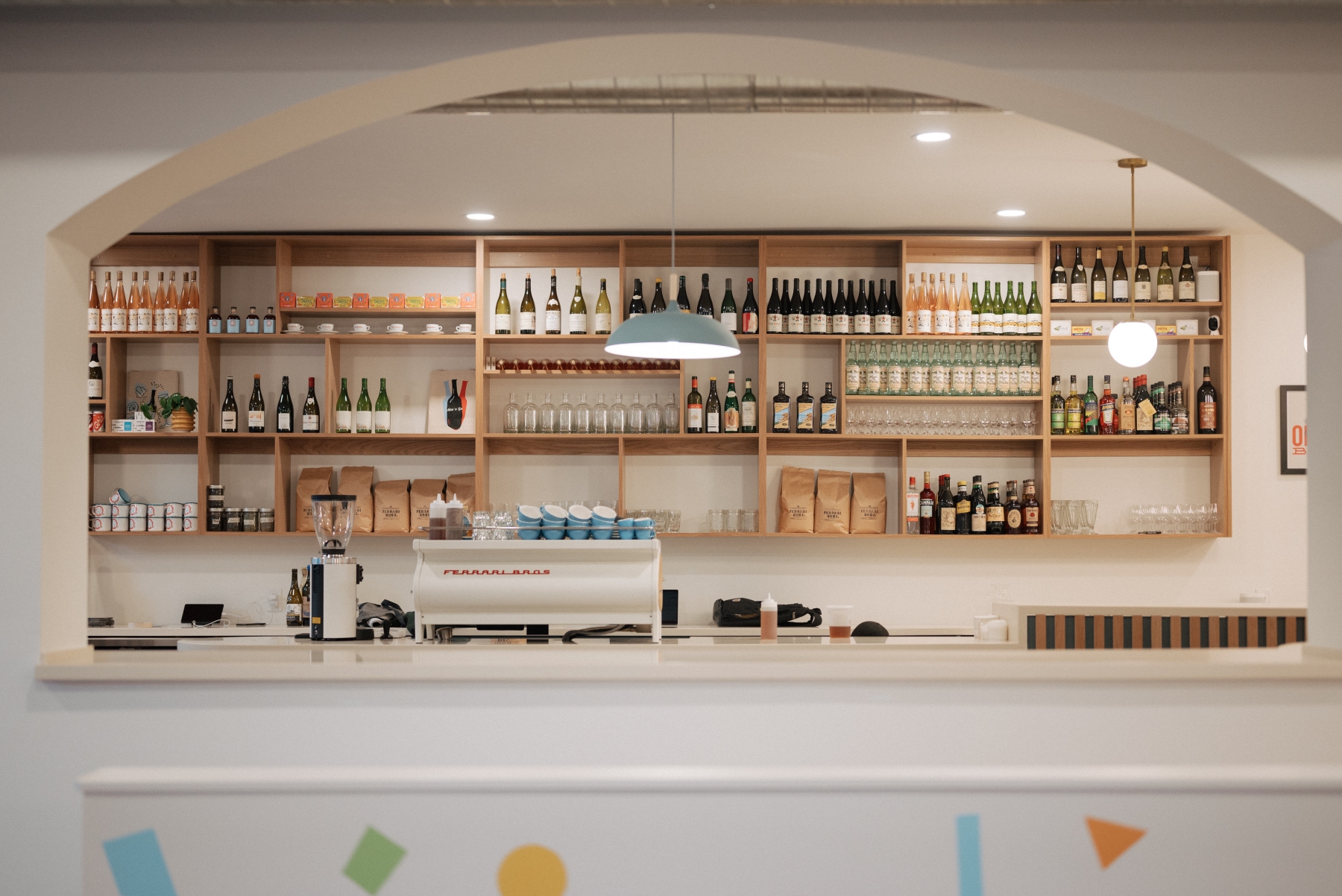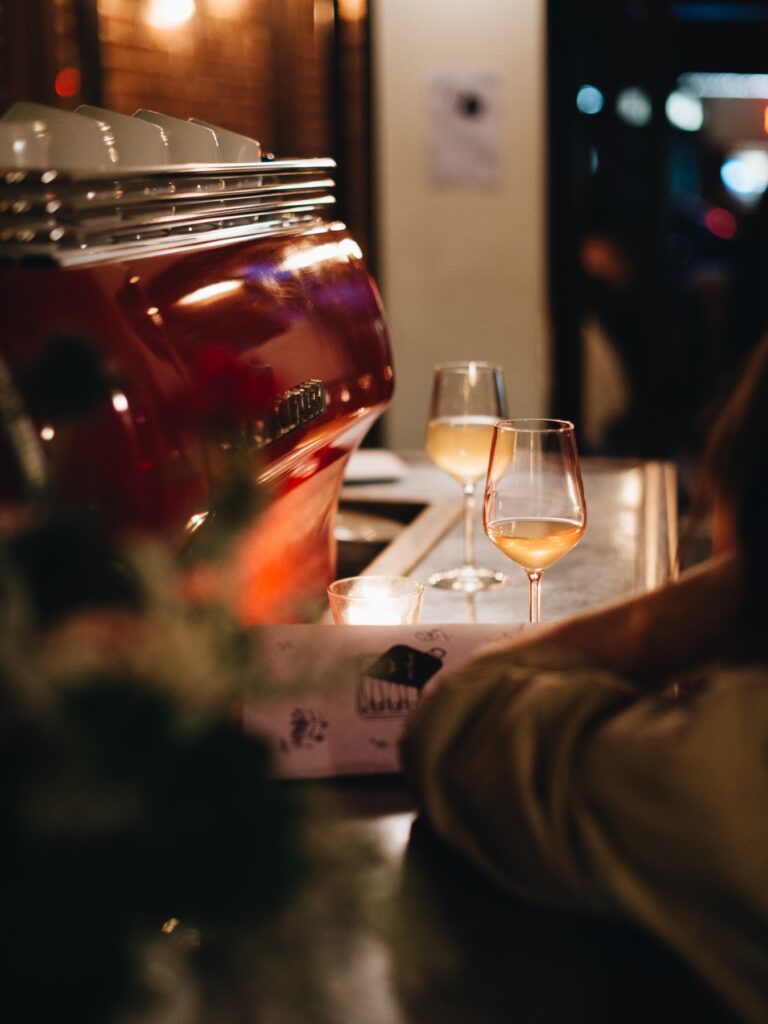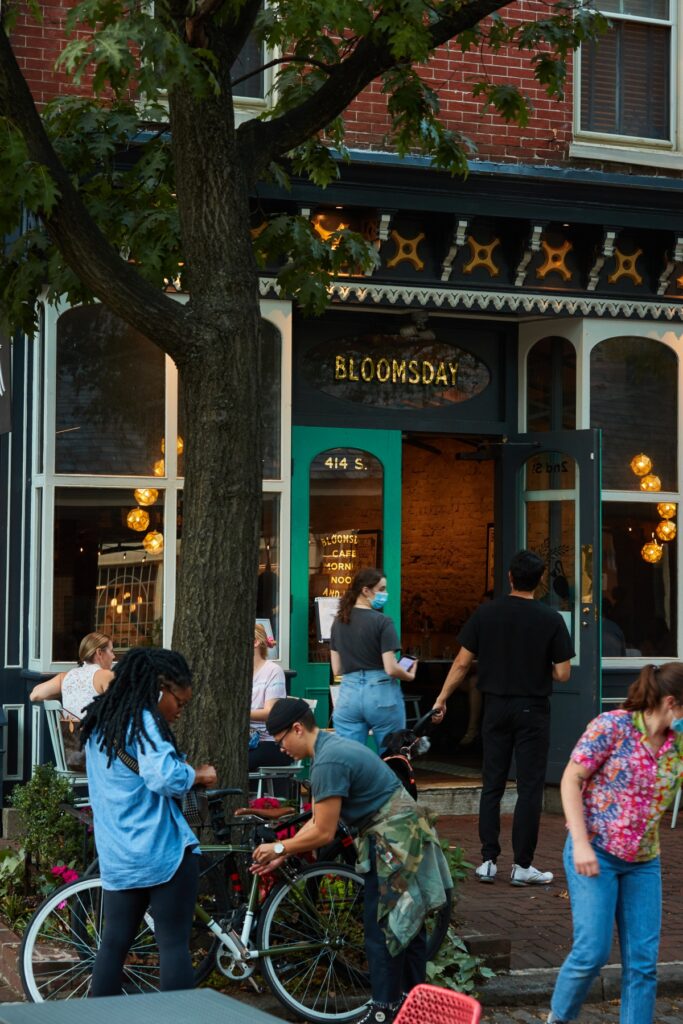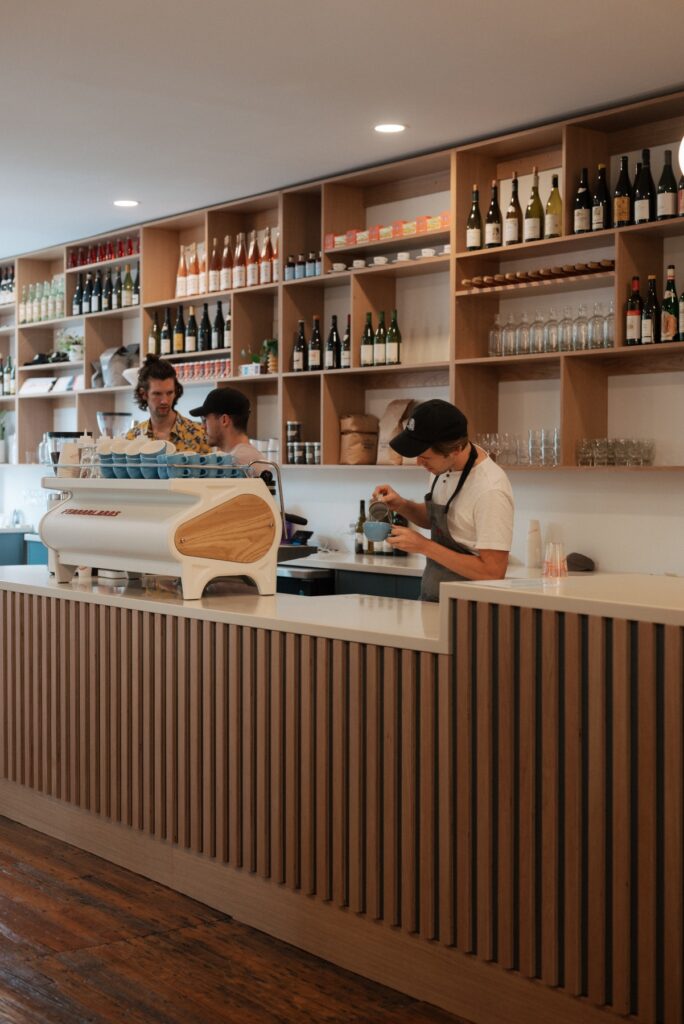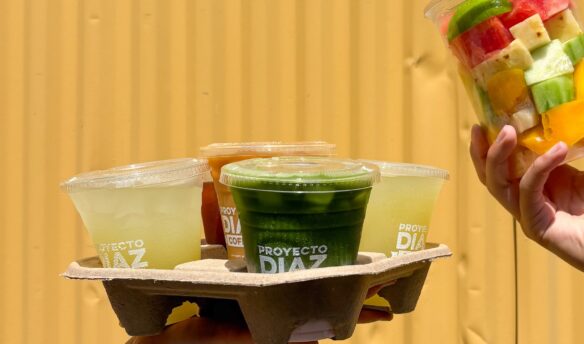Adding alcohol to your café lineup can expand menu offerings and give baristas a new toolkit to express their creativity. We talked to three shops about the ups and downs of serving alcohol in the café.
Cafés and bars have a lot in common. Both represent valuable “third places,” where people can mix, exchange ideas, and develop relationships beyond the more rigid parameters of home and work. Both specialize in beverages that are as delicious as they are mind-altering. But what happens when the two join forces?
I interviewed the owners of three amazing coffee bars serving alcohol to talk pros, cons, and the impetus behind combining coffee and alcohol into a single retail experience.
Why Alcohol?
A Berkeley, Calif. staple, Bartavelle is a seasonally-focused café with an equal focus on coffee, food, pastry, and wine. “This is only possible because we have an amazing team with deep experience in each of these things,” says owner and café manager Samuel Sobolewski.
Bartavelle has served alcohol since it first opened in October 2012. They took over a lease with a beer and wine license and share a wall with wine distributor Kermit Lynch Wine Merchant, “so we’ve always had a few wines by the glass and bottle,” says Sobolewski. “As time went on, we got more excited about this aspect of the business and decided to bring in some wine from a few smaller distributors and local winemakers.”
As that aspect of the business grew, they started an alter-ego wine bar called bar sardine that operated out of the same space in the evenings. “It was just taking off when the pandemic started, so it’s been on hiatus, but bar sardine will be back when we’re in our new space this coming fall,” he says.
Philadelphia-based café, wine bar, wine shop, and vermouthery Bloomsday Café opened with fine alcohol as a centerpiece of its mission, says co-owner and sommelier Zach Morris. “Before the pandemic, we were in the category of ‘all-day café.’ Since then, we’re going through a metamorphosis, and I’m certain we haven’t reached our final stage.”
Cincinnati staple Mom’ n ‘Em also started with alcohol in the mix. “We have a huge wine retail section in our shops. We also sell a lot of wine by the glass,” says co-owner Austin Ferrari. A sommelier by trade, he likes to keep their wine program focused on traditional wines made using minimal additions. They also have a small, curated liquor program.
Mixing the Two
When coffee and alcohol mix in location, should they mix in the cup?
At Bartavelle, Sobolewski doesn’t make coffee cocktails since they don’t specialize in spirits. “Our focus is on natural wines that are carefully and ethically made and play well with our seasonal, produce-driven menu as well as all the salty fishes we like to eat (and serve),” he says.
At Mom’ n ‘Em, you can add liquor to any coffee beverage, although they don’t curate specific pairings.
At Bloomsday, alcohol and coffee are mixed frequently. “On any given day, we have multiple coffee cocktails from a simple caffè corretto [an Italian mixture of espresso and a little bit of liquor] to a more involved riff on a Catalan’ Cremat [a Catalan rum and coffee cocktail],” says Morris.
Expanding the Mind & the Bottom Line
“I think one of the main pros of mixing coffee and alcohol is that the two programs, often separate in the minds of a consumer, are linked,” says Morris. Bridging the times of day customers would typically drink each beverage (morning to afternoon for coffee, afternoon to night for alcohol) gives them all-day sales. If Bloomsday were either just a coffee shop or a bar, they might only see strong sales in the morning or evening, respectively. By having access to a variety of ingredients, the team at Bloomsday can craft new drinks and keep their menu fresh and exciting for themselves and their customers.
Sobolewski also emphasizes profit margins. Serving wine, he says, allows them to make afternoon and evening a viable sales period. “Some of our regulars even come multiple times on the same day and have different experiences to look forward to.” Occasionally, Bartavelle hosts a nighttime wine service they call bar sardine. According to Sobolewski, this can make the difference between Baratvelle “barely breaking even and making a modest profit which is essential to us remaining a sustainable business and paying our employees more than we could as a coffee shop or a restaurant with very high food costs.”
For Ferrari and his brother, Tony, the biggest pro is simply the love of wine. “We enjoy it, and we get to share it with the community. It is something we always wanted,” he says. “The fact that we can merge three things we really enjoy—coffee and wine and food—is amazing.”
Startup & Maintenance Costs
While the cost and difficulty of getting and maintaining a liquor license varies based on state, city, and county, all three people I interviewed noted that serving alcohol is a challenge.
Mom’ n ‘Em pays for liquor licensing every year. “I don’t know the exact number, but it is in the thousands. We had to buy the license, be inspected, and pay annually.” Other than that, Ferrari says the biggest challenge is training staff on a broader menu.
“The cost of keeping a license, increased insurance premiums, and liability are such that for some lower volume cafés with less evening foot traffic, it could be hard to make it work,” says Sobolewski. “It’s also an investment to have someone in a buying capacity and to train staff to serve and talk about wine.”
“It’s certainly more expensive to maintain a liquor license (especially in Pennsylvania with the added expense of big-city costs), and it’s also expensive to maintain an inventory of so many premium products,” says Morris.
For all three, the added revenue plus the joy of serving fine wine, vermouth, and spirits are well worth the cost.
Two Great Tastes that Taste Great Together
“As far as beverages go, we benefit from thinking of them as one larger category,” says Morris. “Coffee and alcoholic drinks are not mutually exclusive. Coffee and tea are subject to a type of fermentation that adds complexity. They have similar origin stories and a connection to their people, place, and time. As sommeliers, our charge is to bring the optimal beverage (not just boozy beverages) for the individual and for the moment.”
Beautifully put: pairing coffee and wine not only expands revenue opportunities but also expands the palate and mind.
RJ Joseph is a coffee writer focusing primarily on equity, workers’ rights, and structural alternatives to the status quo. She’s been a barista, a roaster, a green coffee grader and lab tech, and finally made coffee writing her full-time gig at Red Fox Coffee Merchants. In her decade in coffee, she’s also run a queer coffee events organization, written a blog on equity in coffee, and run a coffee satire website called The Knockbox. If you see her around, say hi.



